Campfire Audio Holocene Review
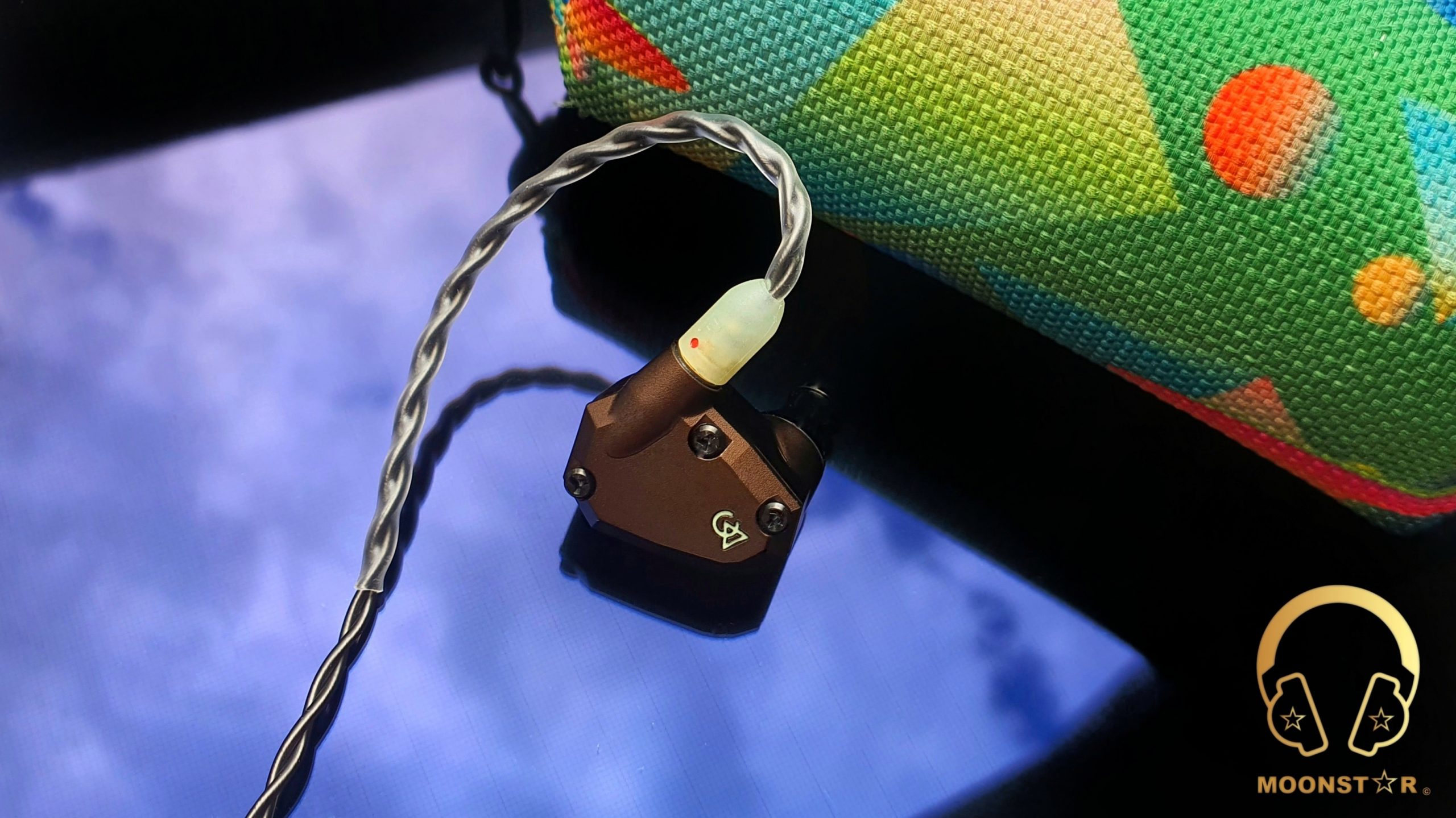
Campfire Audio Holocene IEM Review
Campfire Audio is a US based company located in Portland – Oregon, which is specialized in the development and production of portable audio equipments such like In-Ear Monitors, cables and headphones.
The Holocene is a brand new Multi BA IEM of the company that came out together with the Mammoth, which is also a new release product with a hybrid driver configuration.
The Holocene features 3 Balanced Armature Drivers on each earpiece; one single custom balanced armature for the highs and two independent custom balanced armatures that are responsible for the midrange and the lows. The drivers are combined and optimized using Campfire Audio’s signature 3D printed acoustic chamber design.

Disclaimer:
I would like to thank Campfire Audio for providing the Holocene IEM as review sample. I am not affiliated with Campfire Audio or any third person beyond this review and all these words reflect my true, unaltered opinions about the product.
Price & Availability:
The actual price for the Campfire Audio Holocene is $649.00 USD. More information’s can be found under the link below;
Package and Accessories:
The Holocene came in a square shaped box, which is one of the trademarks of the company. This box is wrapped with a cardboard that is of USA made “French Paper Company” paper which has a label on the top that features the product illustration along with a colorful background that shows so called “Mysterious Geometric Shapes” in form of pyramids, planets, etc. The label is surrounded with stars in black color.
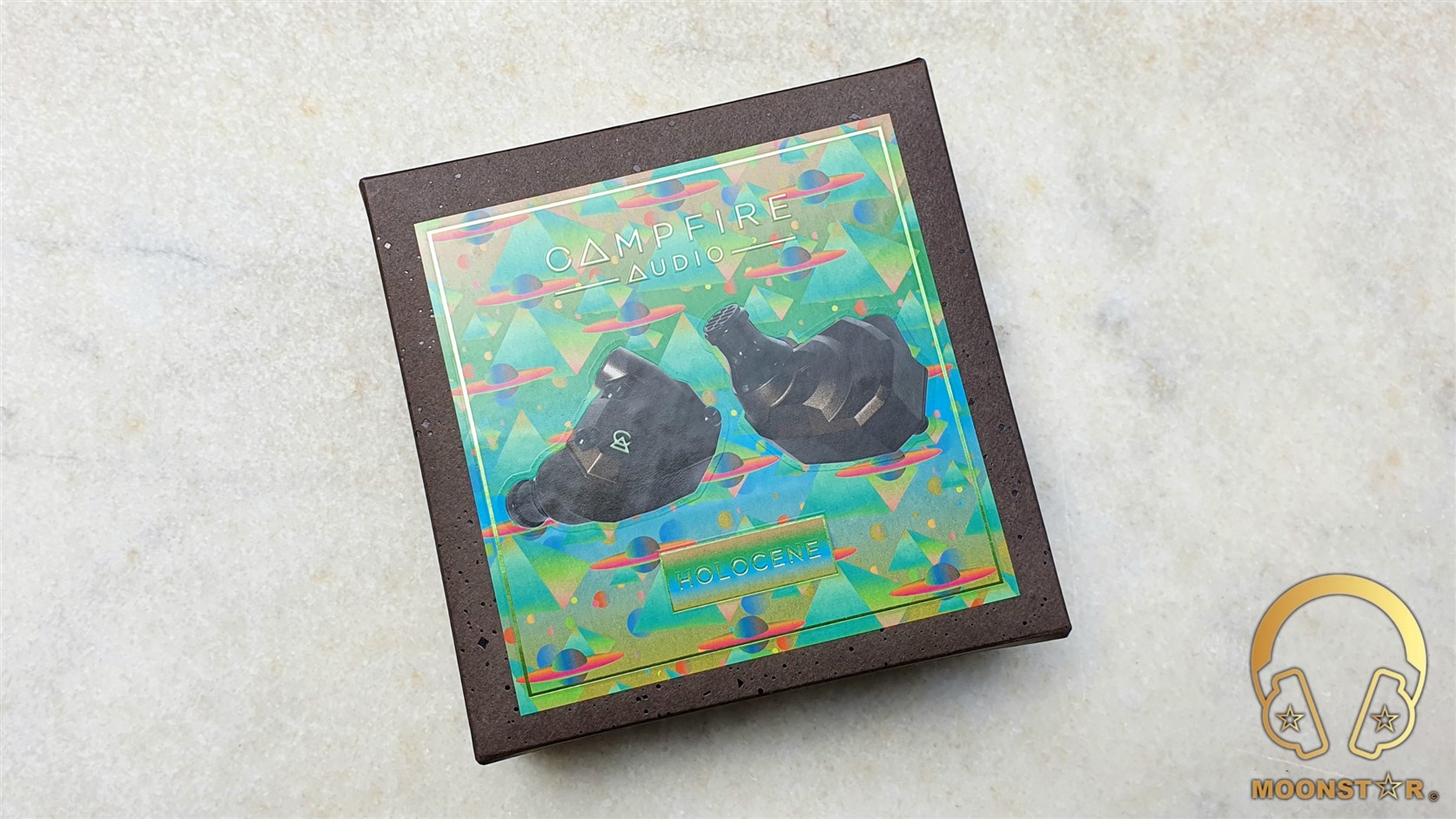
The box itself is made from the same cardboard material in a chocolate brown color with the Campfire Audio logo on the top, set in a scene between a sky full of stars and a mountain surrounded by trees that could represent the nature of Oregon where the company is located.
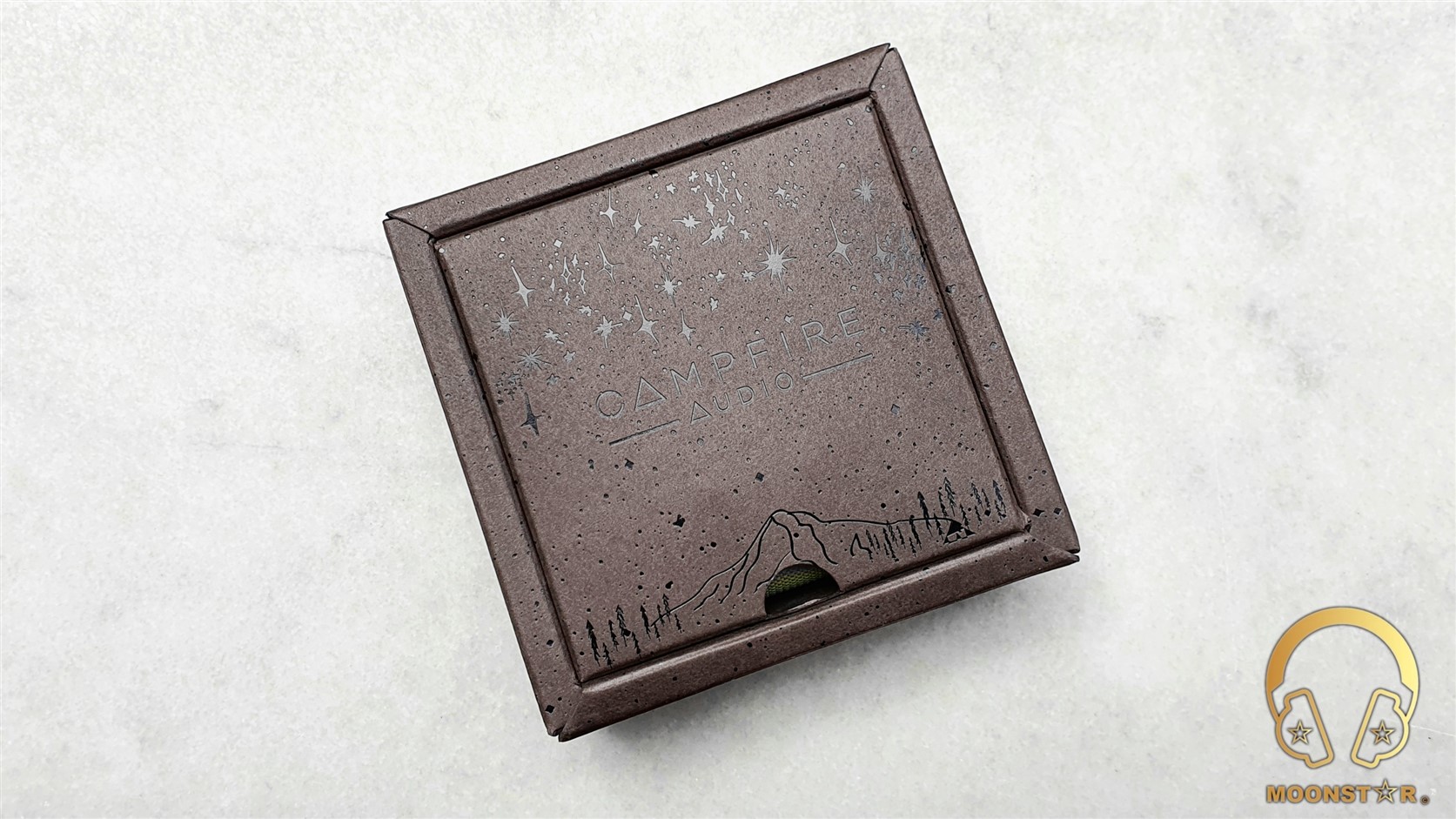
Inside the box are the following contents/accessories;
- 1 pair x Campfire Audio Holocene Monitors
- 1 piece x Campfire Audio Smoky Glow Litz Cable with MMCX connectors
- 5 pairs x Final Audio Silicone Ear Tips (extra small, small, medium, large, extra large)
- 3 pairs x Silicon Ear Tips (small, medium, large)
- 3 pairs x Foam tips (small, medium, large)
- 3 pieces x Pouch
- 1 piece x Cleaning Tool
- 1 piece x Campfire Audio Pin
- 1 piece x Campfire Audio “Epoch” SEAQUAL® YARN Earphone Case
- 1 piece x Print Material (Warrant Card & Instruction Manual)
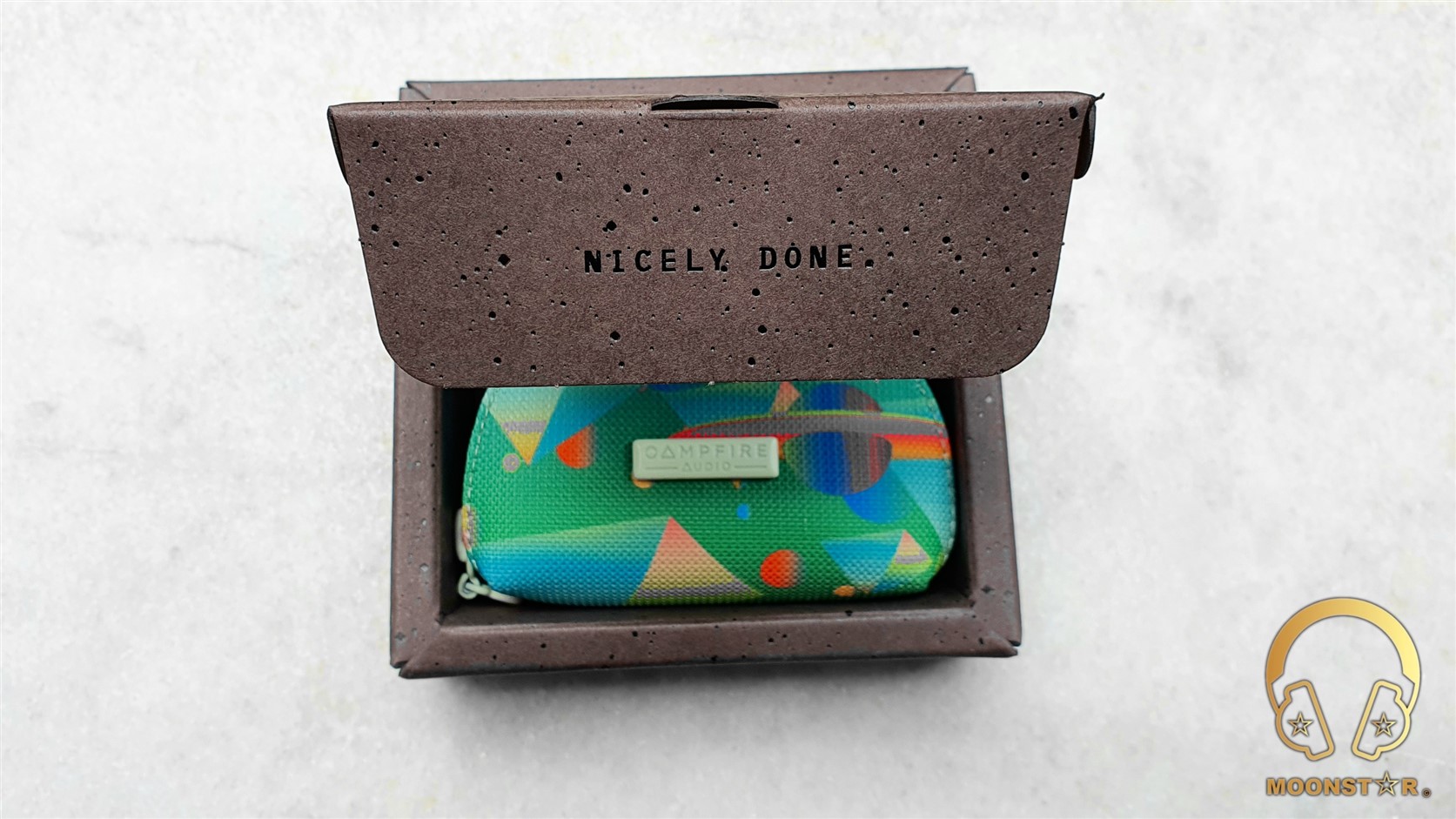

The Campfire Audio Holocene comes with the same rich accessories package that we have seen on previous models such like the Ara, Solaris 2020 or Vega 2020. The accessories package includes a wide variety of ear tips that are 5 pairs of Final Audio Tips, 3 pairs of foam ear tips (Campfire Audio calls it Marshmallow) and 3 pairs of silicone ear tips with wide opening
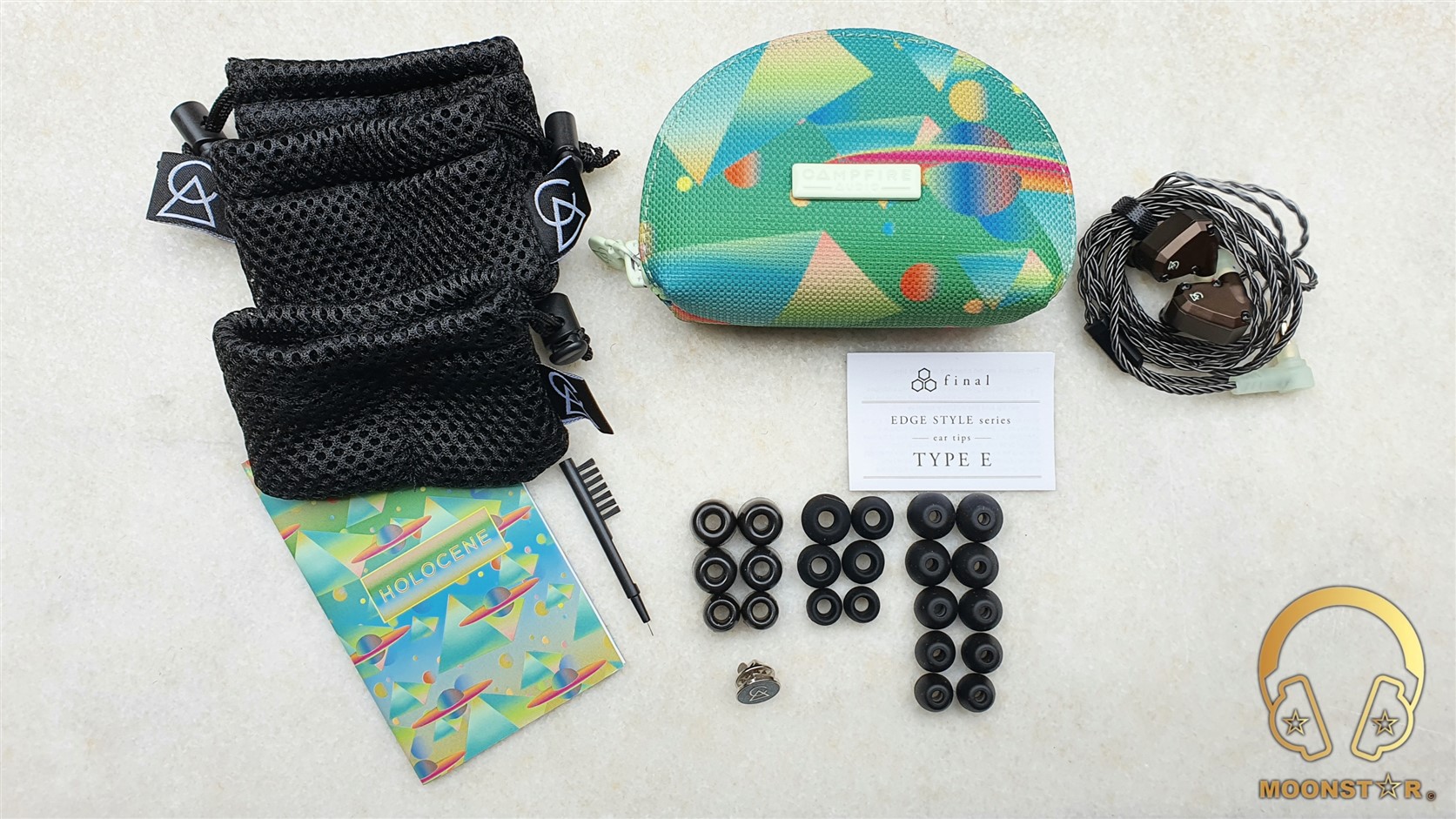
The Epoch’ SEAQUAL® YARN protective zipper case that has a colorful fancy color pattern, is a special attraction that is made of Upcycled Marine Plastic in the form of SEAQUAL® YARN, which is an environmentally friendly update to the past zipper cases.
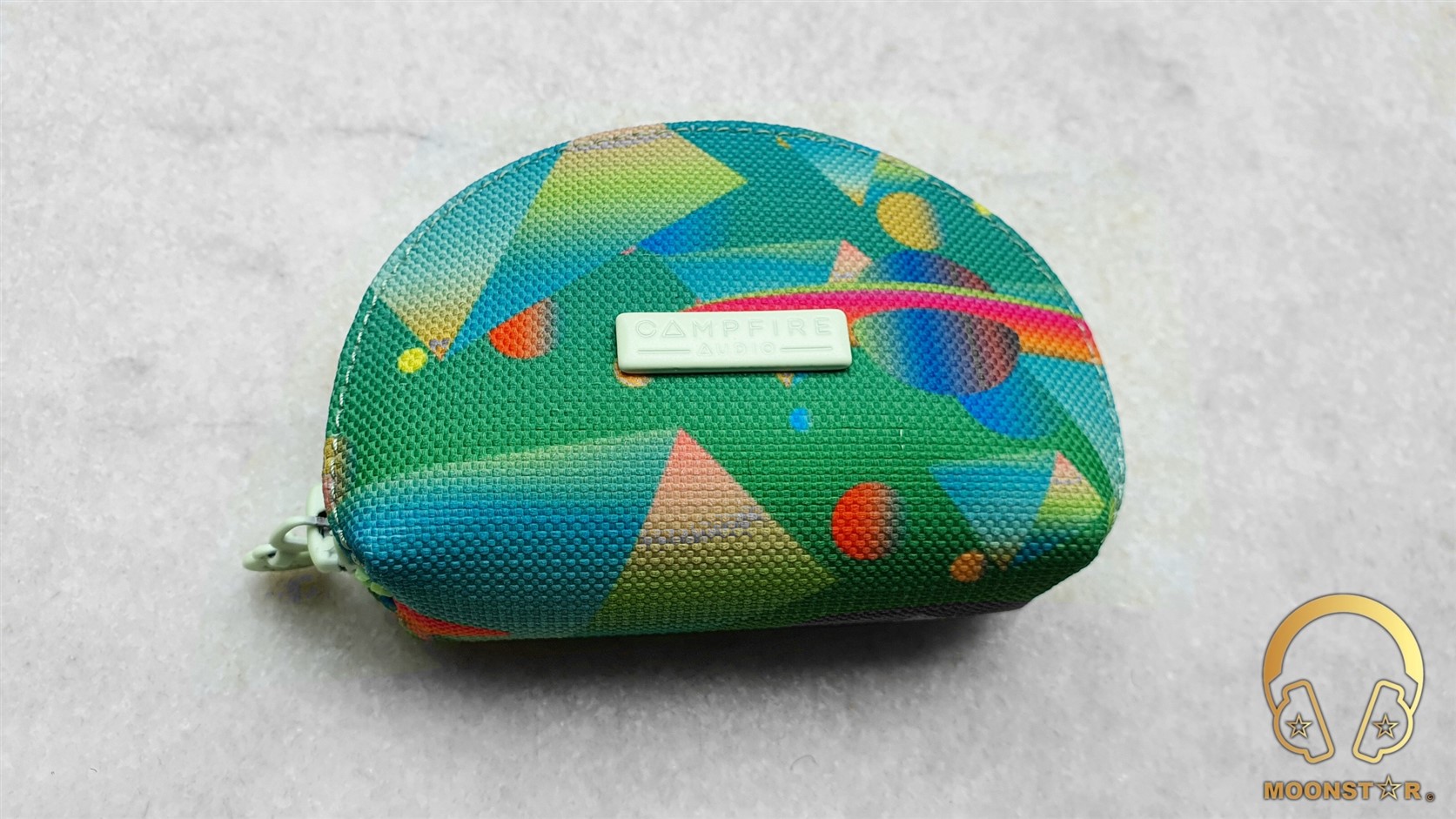
The Lume zipper and plaque do glow in dark environments and the new smooth pulling plastic tooth zipper offers better user experience than past model.
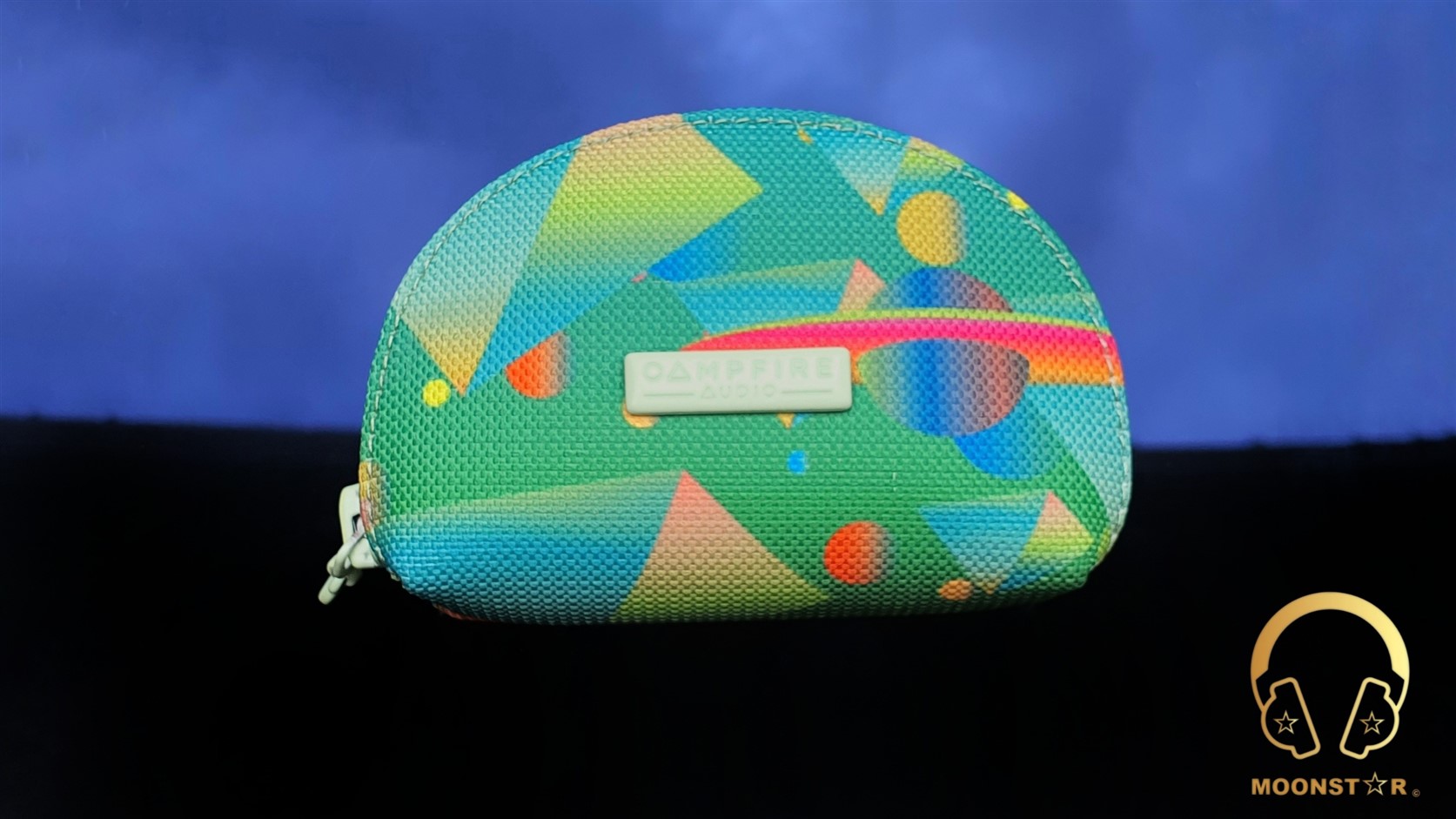
There packaging of the Holocene includes also 3 pairs of double pocket soft pouch’s where you can put the monitors and the ear tips.
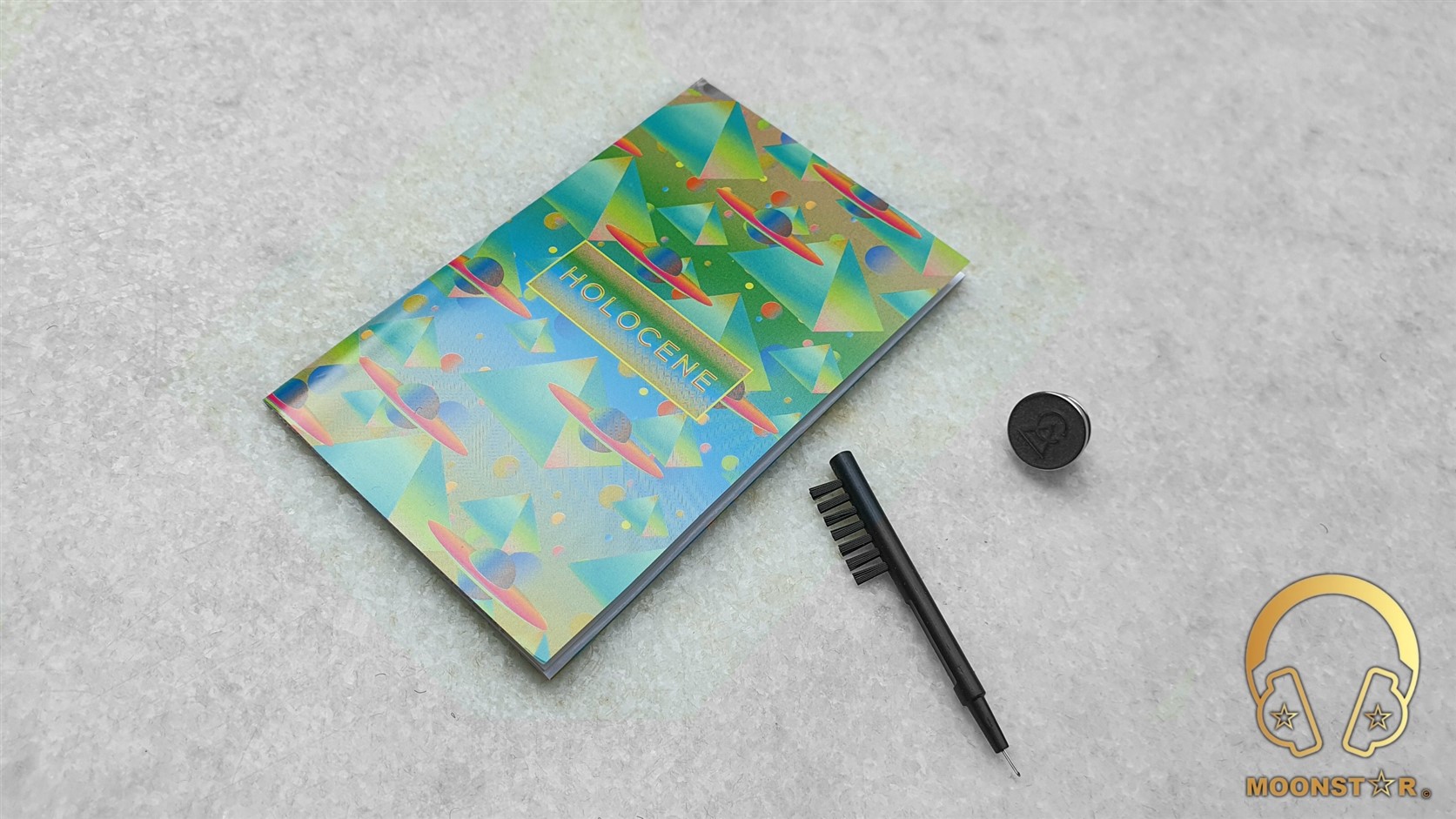
The cleaning tool and a pin with Campfire Audio Logo are some nice addition.
Features, Design and Build Quality:
What I really like about Campfire Audio products is the use of high quality materials that do always show a premium finish and the Holocene is no expectation. Each monitor shell is machined from aluminum material and is anodized in an ‘umber’ finish. It is fixed with black tri-lobe screws and a black PVD finished stainless steel spout. It has the same shape that we know from past monitors which is a trademark of the company.

The faceplate of the monitors do have 3x tri-lobe fixing screws in black color on the top and do feature the Campfire Audio brand logo that glows in dark environments thanks to the luminance finish.
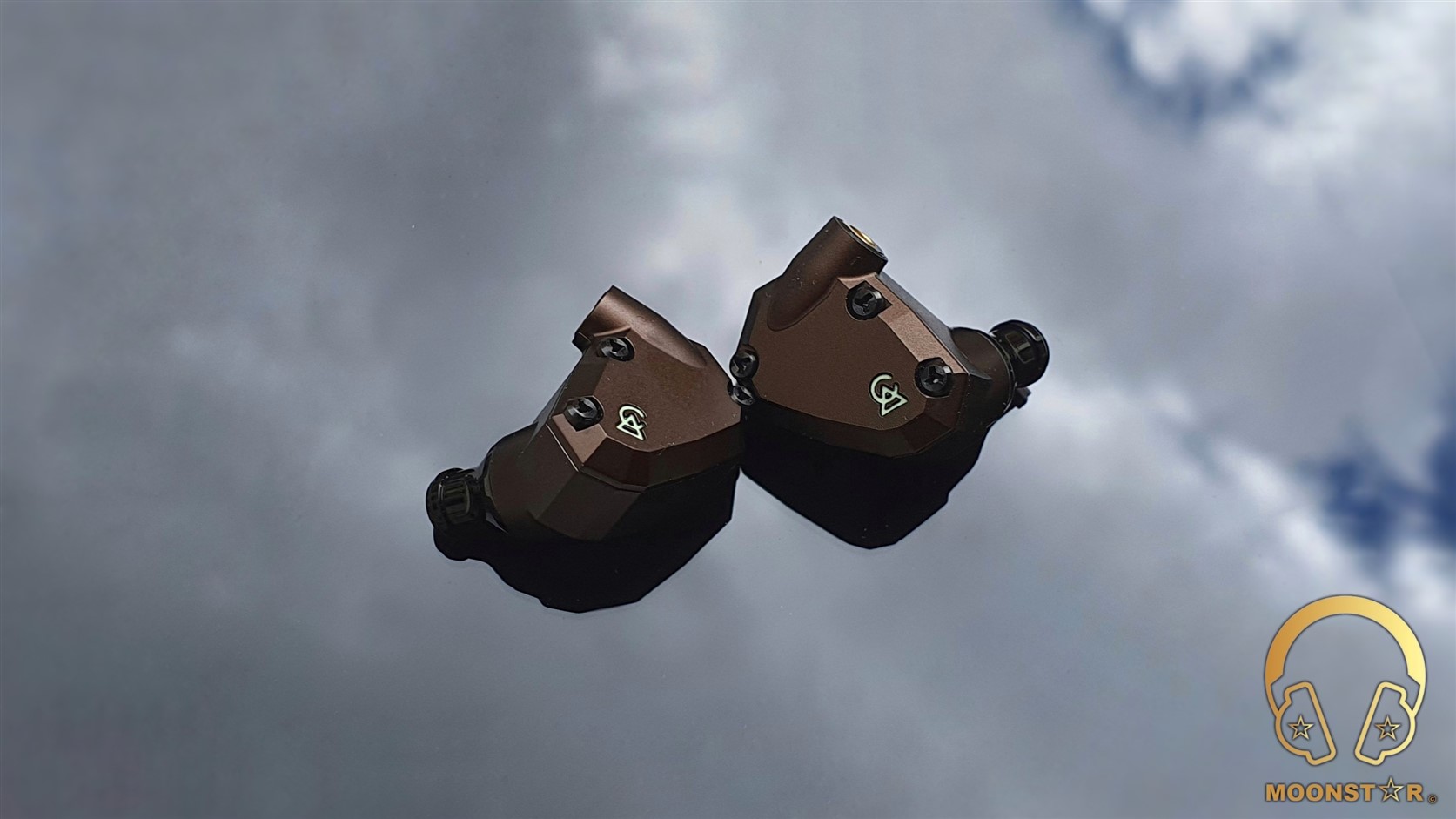
The rear body is the place where the sound nozzle and the L (Left) & R (Right markings are located.

The sound nozzle is in black color and made of PVD black stainless-steel material that comes with a new grill design.
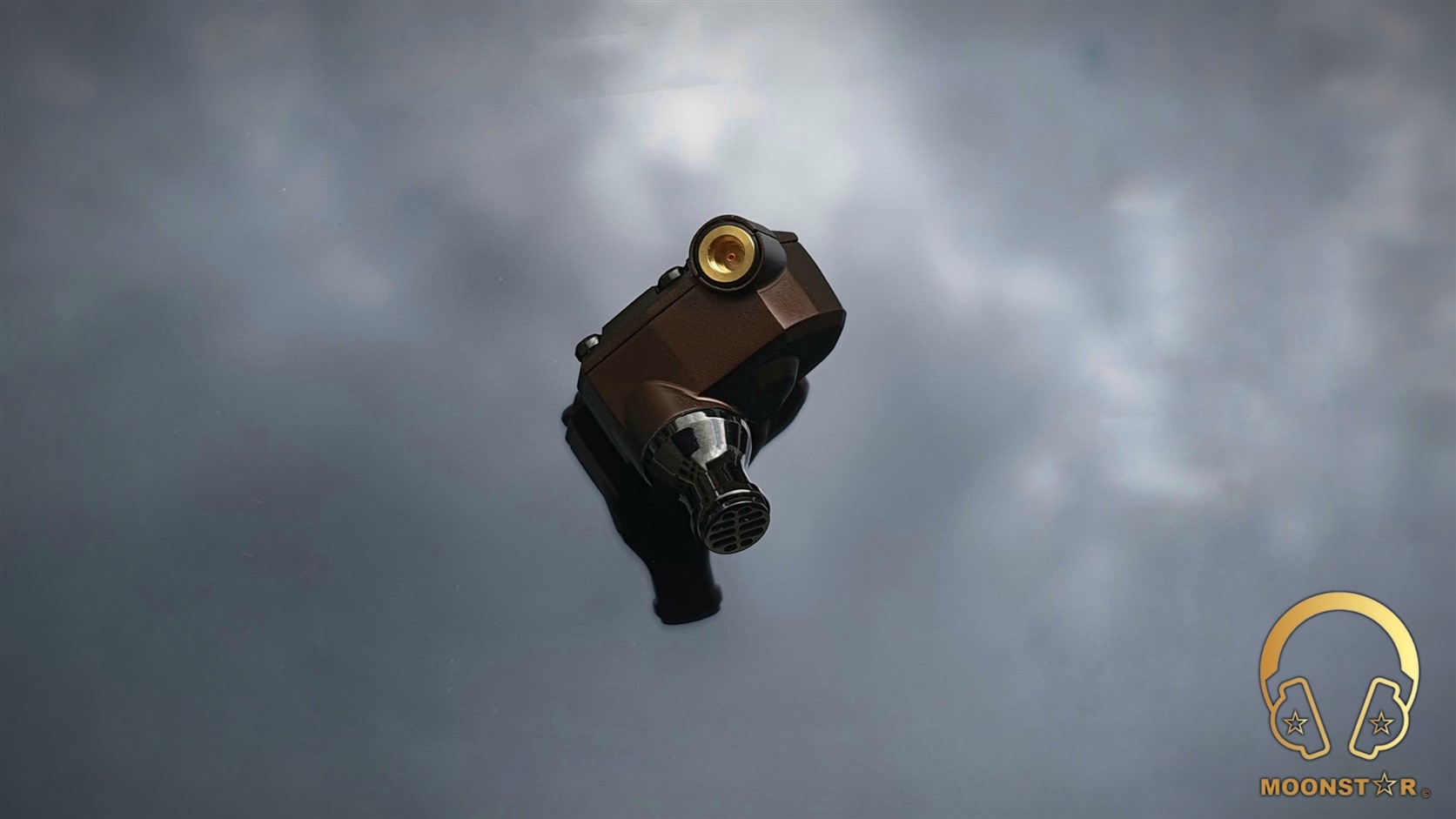
On the top of each monitor shell is the Beryllium Copper MMCX (Micro Miniature Coaxial) connector that looks pretty robust with the mating mechanism.
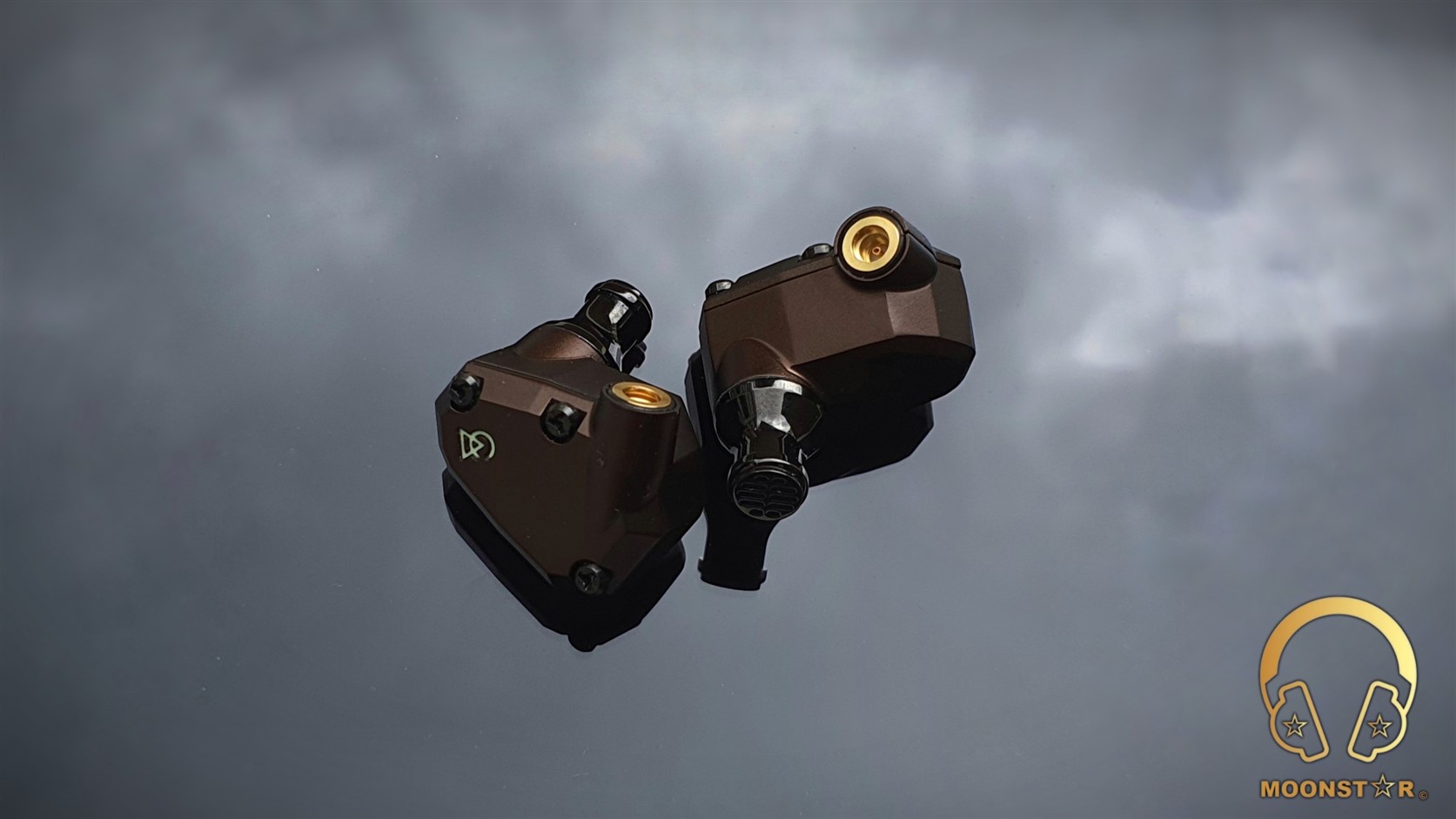
The Holocene comes with Campfire Audio’s new 4-core “Smoky Glow” cable that features Silver Plated Copper Litz wire conductors that do have a tangle-resistant twisted profile.

The cable features a pretty soft and flexible insulation in grey color, which has a quite durable look and feel.
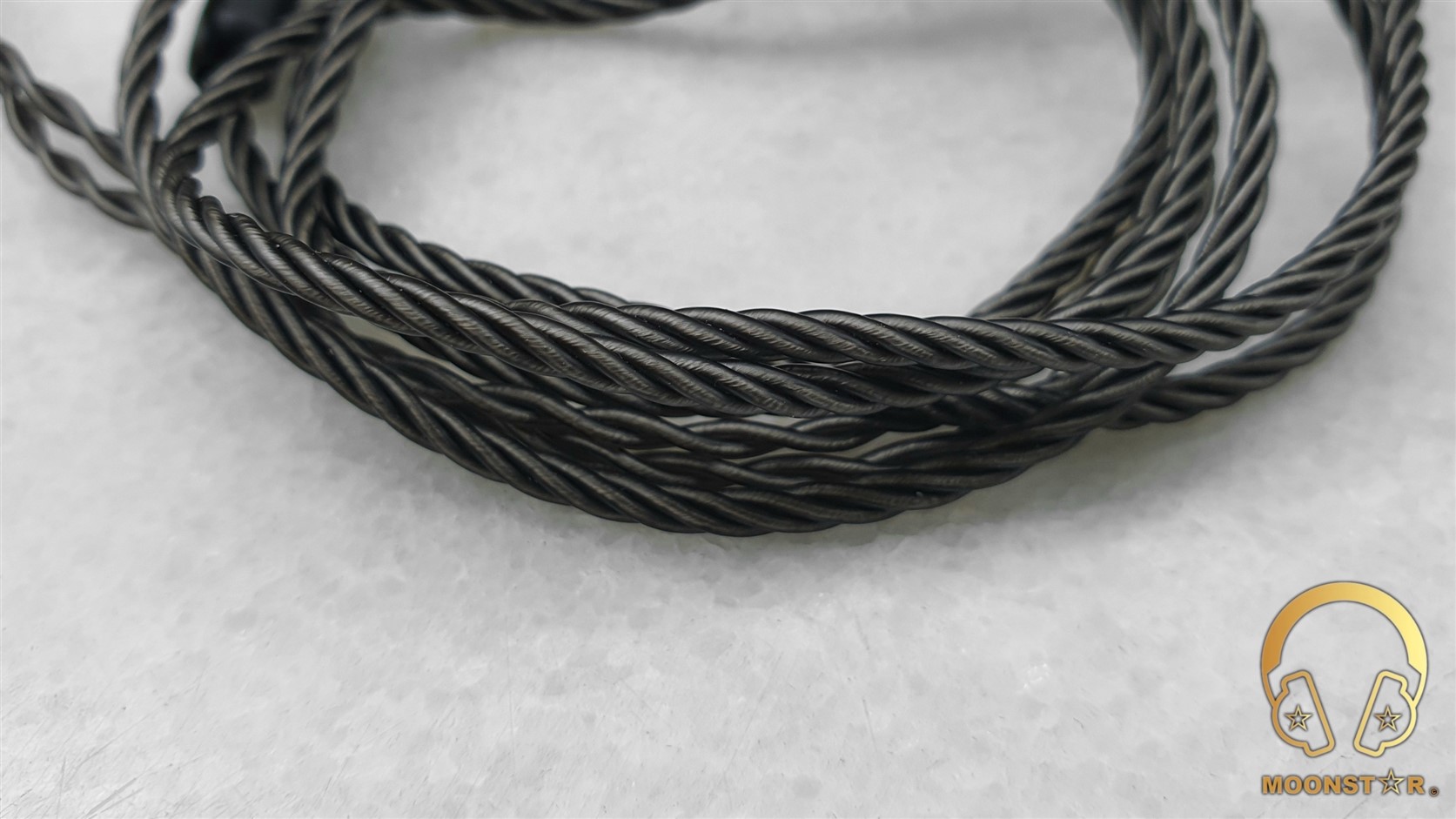
This cable features beryllium copper MMCX (Micro Miniature Coaxial) connectors. Beryllium Copper provides a robust mating mechanism; one that is typically made from soft brass.
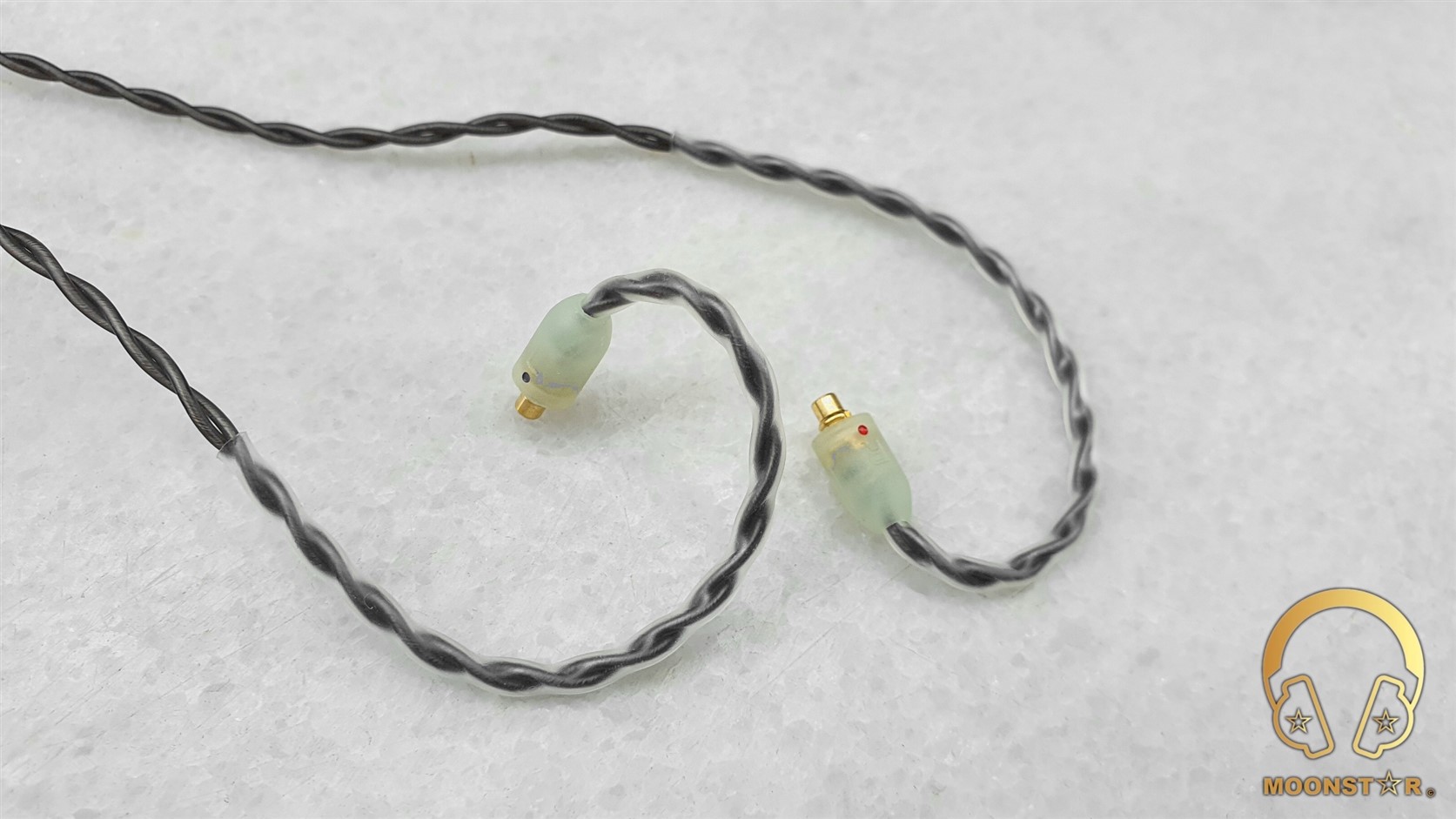
The housing of each MMCX connector has Glow-In-The-Dark overmolds that do have left and right indicators. The cable features also overmolded ear guides for extra comfort, especially on the go.
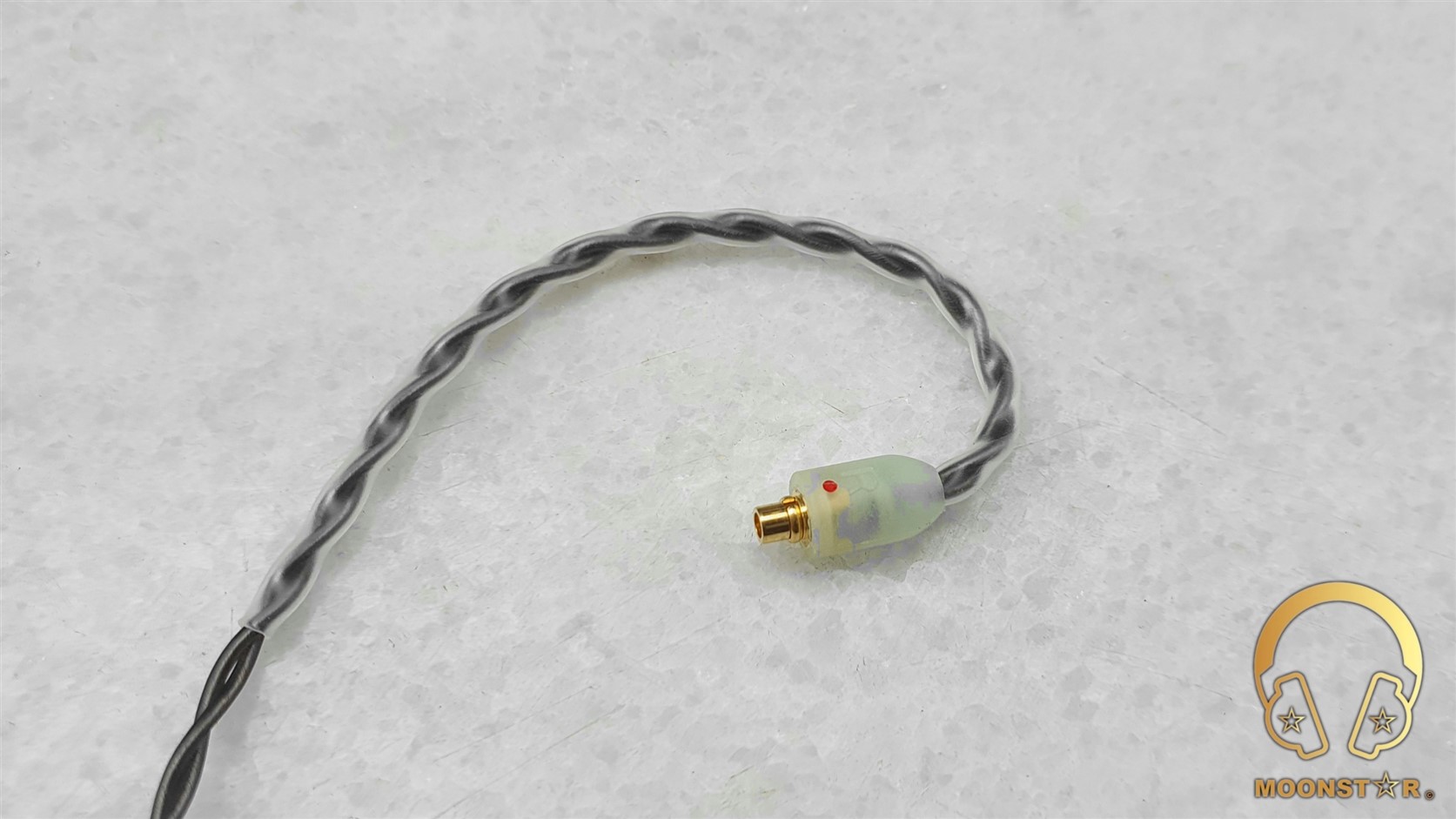
The cable sports a metal Y splitter and chin slider in black color.
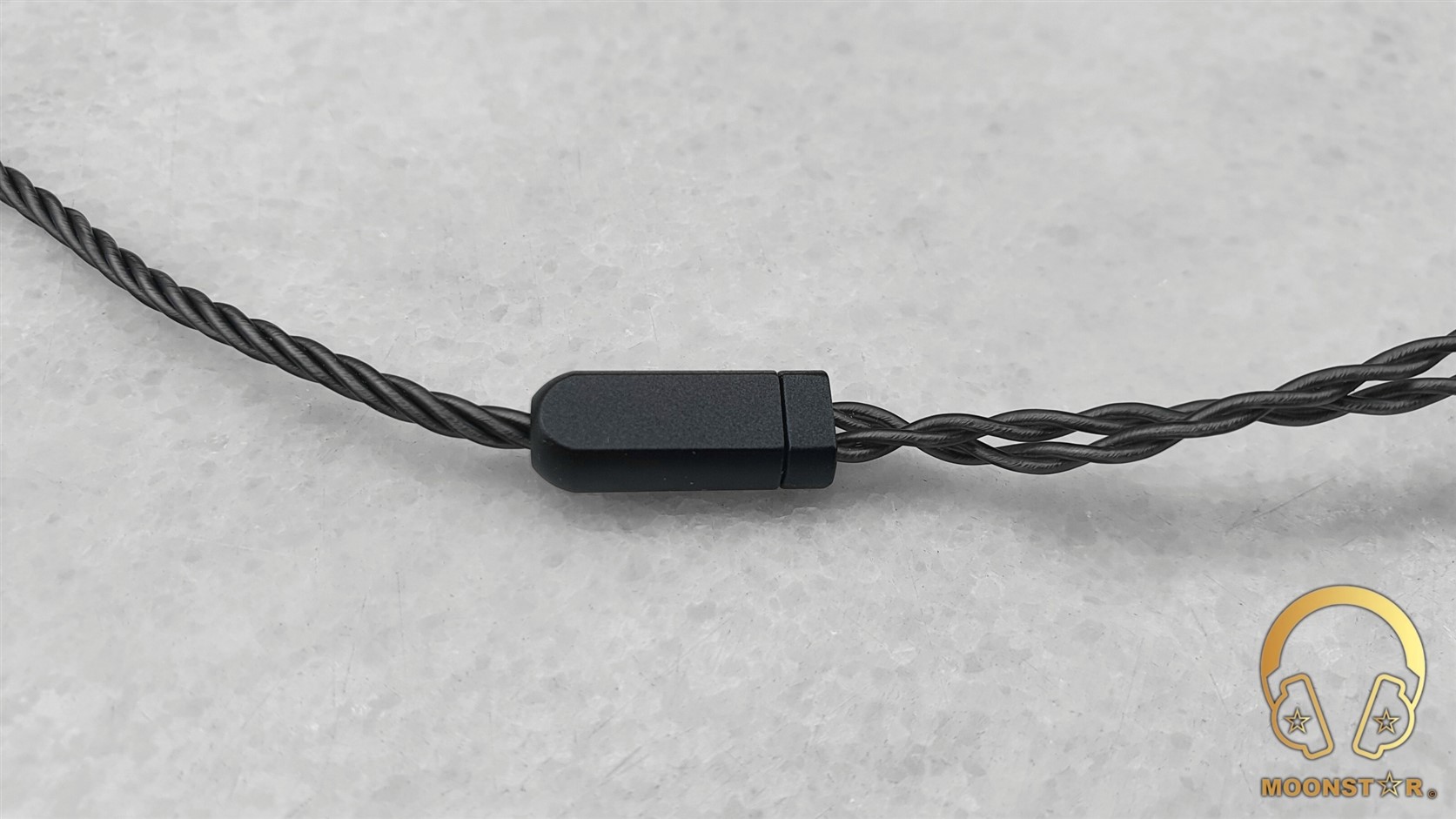
The 3.5mm single ended headphone jack features the same Glow-In-The-Dark plastic housing that has an L angled profile.

The build quality of both the monitors and the cable is of high quality and fulfils the expectations from a product at this price level.
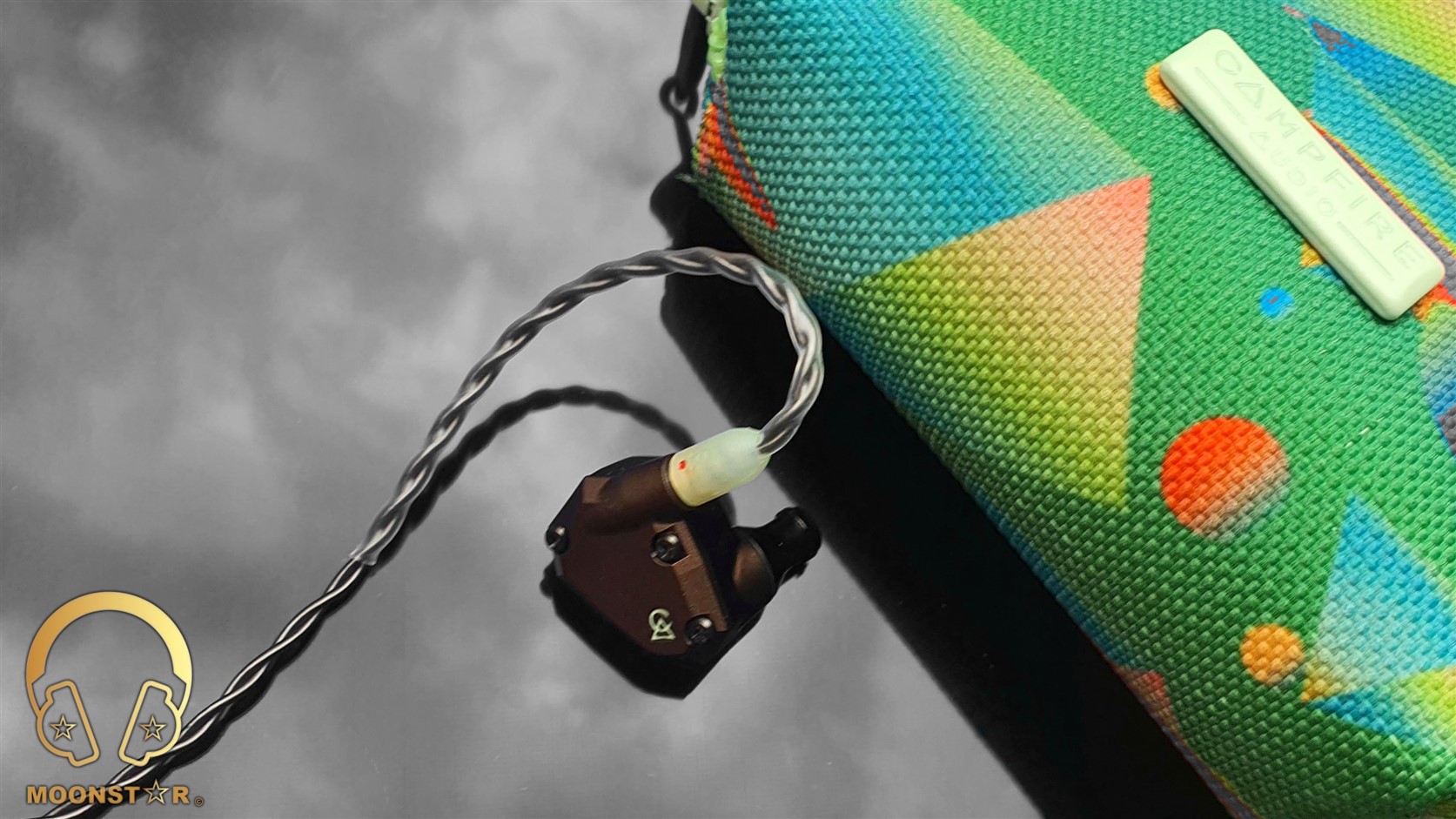
Fit, Comfort and Isolation:
The Campfire Audio Holocene fits perfectly to my average sized ears thanks to the precise adjusted shape. Each monitor offers a comfortable fit without to hurt my ear concha’s even after longer listening periods
The passive noise isolation of the Holocene is on an above average level, which makes ideal for the use in relative noisy environments such like a bus, train or metro.
Technical Specifications:
- Driver Units : 3 Balanced Armature Drivers (1x Lows, 1x Midrange, 1x Highs)
- Freq. Resp. : 5 Hz – 20 kHz
- Sensitivity : 94 dB SPL @ 1 kHz: 6.99 mVrms
- Impedance : 5.4 Ohms
- Cable : 4-core Silver Plated Copper Litz Wire Material
- Connector : Beryllium Copper MMMC (Micro Miniature Coaxial Connector)

Drivability:
The Campfire Audio Holocene is a very easy to drive In-Ear Monitor same like all previous models, thanks to its low impedance of 5.4 Ohms and a sensitivity of 94 dB. This makes the Holocene to an ideal IEM for the use with portable sources like smartphones, tablets, etc. It can be driven to very loud volumes without the need of an external amplifier.
Equipment’s used for this review:
- In Ear Monitors : Campfire Audio Holocene, Final Audio B1, Metalure Wave
- Sources (DAP/AMP) : iBasso DX300, FiiO M11 Pro, Shanling UP5

Albums & Tracks used for this review:
- Hayley Westenra – Odyssey Album (Dezzer HiFi)
- Dionne Warwick – Walk On By (Flac 16bit/44.1kHz)
- Sarah McLachlan – Angel (Flac 24bit/48kHz)
- Sertap Erener – Aşk (Flac 16bit/44.1kHz)
- Edith Piaf – Non Je Ne Regrette Rien (Flac 16bit/44.1kHz)
- Diana Krall – So Wonderful (DSF)
- Aretha Franklin – I Say A Little Payer (Flac 24bit/96kHz)
- David Bowie – Heroes (Flac 24bit/192kHz)
- Barry White – Just The Way You Are (Flac 24bit/48kHz)
- Isaac Hayes – Walk On By (Flac 16bit/44.1kHz)
- Sting – Englishman in New York – (Flac 24bit/48kHz)
- Eric Clapton – Wonderful Tonight (Flac 24bit/96kHz)
- U2 – Sunday Bloody Sunday (Flac 16bit/44.1kHz)
- Really Slow Motion – Deadwood (Deezer HiFi)
- Jo Blankenburg – Meraki (Spotify)
- Lorde – Royal (Flac 24bit/48kHz)
- Toutant – Rebirth (Deezer HiFi)
- Portishead – It Could Be Sweet (Spotify)
- Charly Antolini – Duwadjuwandadu (Flac 24bit/192kHz)
- Chopin – Nocturn No. 20 In C-Sharp Minor (Flac 16bit/44.1kHz)
- Fazıl Say – Nazım Oratoryosu (Live) (Flac 16bit/44.1kHz)
- Vivaldi – Le QuarttroStagioni “The Four Season” (Deezer HiFi)
- Otto Liebert& Luna Negra – The River (Flac 24bit/192kHz)
- Armin Van Buuren – Vini Vici (Flac 16bit/44.1kHz)
- Lunatic Soul – The Passage (Flac 16bit/44.1kHz)
- Deftones – My Own Summer (Shove it) (Flac 16bit/44.1kHz)
- Metallica – Sad but True (Flac 24bit/96kHz)
- Opeth – Windowpane (Flac 16bit/44.1kHz)
- Megadeth – Sweating Bullets (Tidal Hi-Fi)
- Rush’s – Leave That Thing Alone (Flac 16bit/44.1kHz)
- Slayer – Angel of Death (Spotify)s
- Liquid Tension Experiment 2 – Acid Rain (Spotify)
- Yosi Horikawa – Bubbles (Spotify)
The Sound:
The Campfire Audio Holocene has a pretty neutral tuning with a breeze of warmth. The bass shows a linear character and offers a great sense of resolution and authority. The midrange is transparent, natural and airy, while the treble is the only part where the Holocene shows a noticeable coloration with a peak around the 7 – 8 kHz region.
Please note that my sound impressions below are mainly based on source parings with the iBasso DX300, FiiO M11 Pro and the Shanling UP5. I have used the Final Type-E Silicone Ear Tips and the stock Smoky Glow Litz cable that are included to the package.
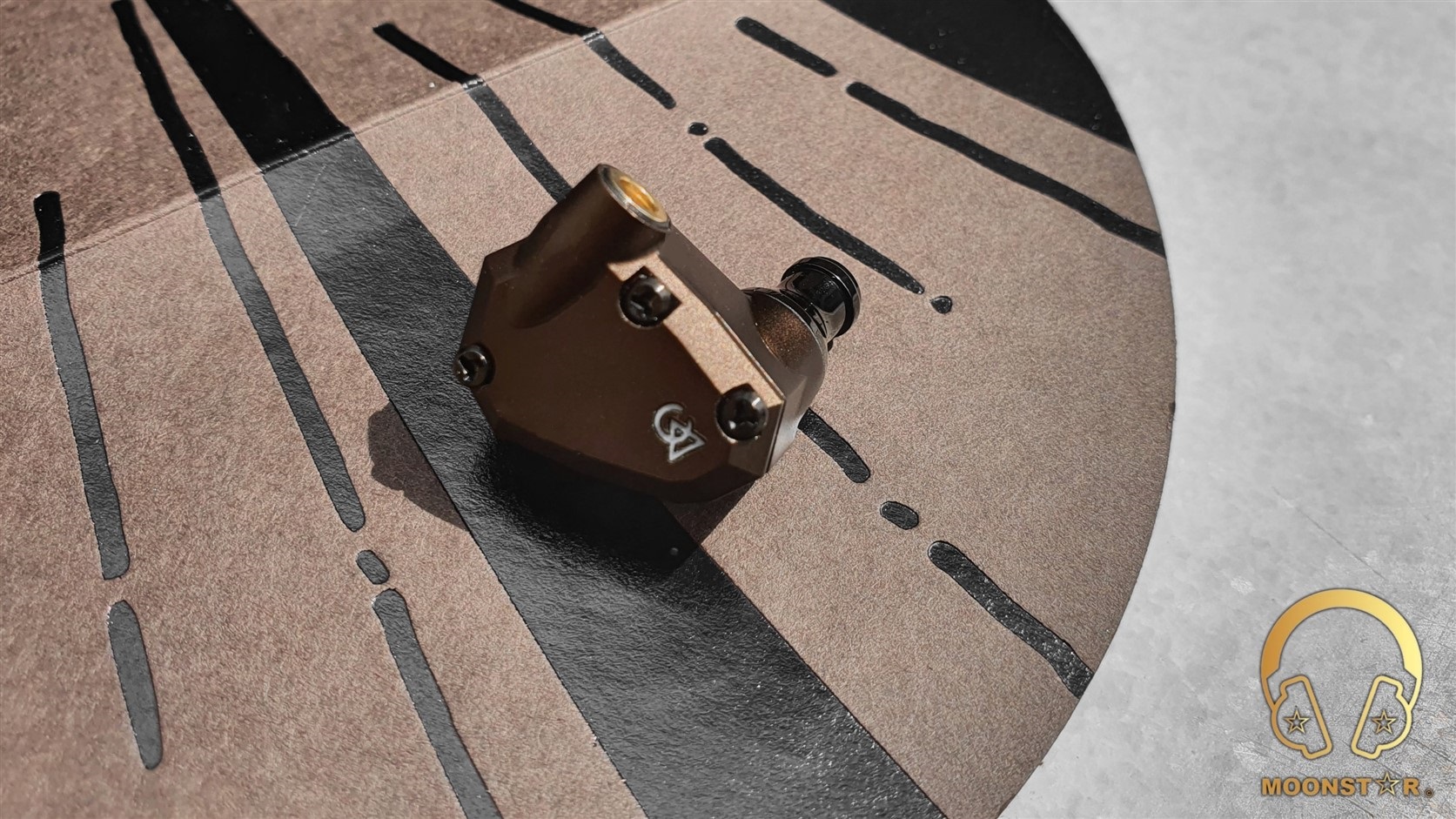
Bass:
The Campfire Audio Holocene is a pretty neutral sounding In-Ear Monitor with a close to reference type of sound tuning. The bass shows a fairly linear response, which has in general a pretty fast, clean, controlled presentation. The detail retrieval in this area is above average, while the extension is a bit short. Especially the sense of authority and separation in this area are admirable.
The subbass region shows a moderate level of weight and depth, while the decay is fast and controlled. The Holocene is not the type of IEM with boomy and rumbling bass response if you are a bass-head, but will for sure impress many others who are looking for a more reference type of subbbass response with great technicality.
The Holocene has a lightly pronounced midbass tuning, which is a tad less pronounced compared to the subbass area. It is highly controlled and fast, so that it doesn’t shows any negative situations like a midbass-hump, muddiness and mixings, even very complex bass passages.
The bass quantity & intensity of the Holocene should be enough for genres such like Metal, Jazz, Blues or Acoustic music, while it is not ideal bass intensive genres such like EDM, Trance or Dance Music.

Midrange:
The Midrange of the Holocene is one of the interesting parts of its sound spectrum and shows a fairly different character compared to previous Campfire Audio products. The midrange is quite even with minimal elevations both in the lower and upper midrange register.
Female and Male vocals are reproduced with a great level of resolution. The sense of transparency, airiness and emotion is pretty good, while I would like to have a tad more lower midrange depth and body when I do listen to vocals like Barry White or Isaac Hayes, which can fairly solved with the Final Type-E ear tips which are included inside the package.
The lower midrange shows an average sense of depth and body, while the level of clarity is pretty good when I do listen to male vocals or string instruments like violas and guitars or to woodwinds like violas and clarinets/bassoons.
Female vocals on the other hand do have a slightly warmish and pretty emotional tonality. There is only a mildly peak around the 3 kHz region that is able to produce an adequate sense of brightness to avoid any graininess or dullness. Female vocals like Aretha Franklin, Dionne Warwick or Diana Krall do sound pretty detailed and intimate, without to show any sibilance or over sharpness.

Treble:
The treble range is the most emphasized/accented area of the Holocene. It is pretty detailed, bright yet controlled, which makes it so special when I do listen to songs with lots of treble intensive instruments.
The transitions from the upper midrange towards lower treble are in general quite controlled, even when instruments do play with high level of distortion. The lower treble region is less highlighted compared to the upper treble, which has an audible roll off after the 4 kHz region. The Holocene shows a moderate sense of clarity and definition, while the extension is slightly short. Woodwind instruments such like a side flute or clarinet do sound mildly pronounced and clear, while pianos are shows with an average amount of intensity.
The upper treble area is the focal point of the Holocene that has an pretty audible elevation around the 7 – 8 kHz region that gives the overall presentation a good sense of airiness and sparkle. The Campfire Audio Holocene offers a good level of extension and resolution in this area, when I do listen to instruments like snare drums or cymbals.
The general treble presentation of the Holocene can be described as detailed, airy and dynamic, without to be prone to sibilance and harshness, especially when I did listen to it to treble intensive genres with complex passages like jazz or trash metal.

Soundstage & Imaging:
The Campfire Audio Holocene shows a fairly expansive soundstage atmosphere with adequate sense of airiness, which is suitable for relative precise positioning and separation of instruments and vocals. The soundstage has an above average wideness and height while the depth of the stage is on a moderate level.
Some Comparisons:
Campfire Audio Holocene versus Final Audio B1:
The Campfire Audio Holocene and the Final Audio B1 are Universal IEM’s with a decent build quality, look and comfort. The Holocene is a very easy to drive IEM, while the B1 needs some extra amplifications to show its potential.
The B1 shows a more V shaped sound signature with emphasis on both ends, which makes it more suitable for genres like electronic, trance and dance music, while the Holocene shows a more natural and balanced tuning.
The subbass region of the B1 is slightly more highlighted and shows also more depth and rumble. However, the Holocene has the upper hand when it comes to the decay and control in this area. The tuning difference in the midbass region is much more audible. The midbass or the B1 is more pronounced, which shows a higher sense of impact, body and depth. The Holocene on the other hand offers a more linear response, with better level of tightness, control and detail retrieval, which is especially noticeable in songs with complex bass passages.
The midrange of the Holocene has a more neutral tonality and is also slightly more upfront when I do listen to vocals. The B1 on the other hand shows more warmth and is a bit recessed in this area due to the V shaped tuning. The Campfire Audio Holocene has the slightly edge when it comes to the midrange resolution and transparency, compared to the Final Audio B1 that shows a high amount of coloration.
When it comes to the upper midrange and treble area, I can say that the Final Audio B1 has the upper hand in terms of quantity and overall intensity, while the Campfire Audio Holocene stands out with its smoothness, naturalness and control in this area. The treble range of the Holocene offers a better sense of separation from the top to the bottom while the detail retrieval is on par.
The Holocene has the slightly edge when it comes to the soundstage wideness, while the depth of the stage is pretty equal.

Campfire Audio Holocene versus Metalure Wave:
The Metalure Wave is an In-Ear Monitor of a company that is relative new in the portable audio scene. The Wave has a very solid appearance same like the Holocene, while it is a bit weighty compared to the more compact and lighter monitor shell of the Holocene.
The Metalure Wave has a noticeably warmer tonality and shows also more coloration from the lows up to the highs. The Wave has more subbass depth and body, but the decay is not as fast as those of the Holocene that offers also a better sense of resolution in this area.
The midbass region of the Campfire Audio Holocene sounds more neutral, clear and detailed, while the Metalure Wave offers a higher sense of impact, depth and body that leads in some complex bass passages to muddiness and mixings.
The midrange of the Campfire Audio Holocene sounds in general more balanced and airy along with a tad brighter tonality. The Metalure Wave on the other hand shows a warmer tonality and slightly more musical tonality. The lower midrange of the Wave has more depth and body, while the upper midrange of both IEM’s shows a moderate sense of brightness. However, the Holocene has the slightly edge in terms of clarity and detail retrieval in this area.
The treble range of the Campfire Audio Holocene is slightly more pronounced, especially in the upper treble region. Both In-Ear Monitors do offer a pretty controlled and smooth treble experience, while the Holocene has an slightly advantage when it comes to the extension and micro detail retrieval in this area.
The soundstage of the Campfire Audio Holocene sounds in general more spacious and airy, which offers also a better sense of soundstage wideness, while the difference in terms of depth and height is quite minimal.
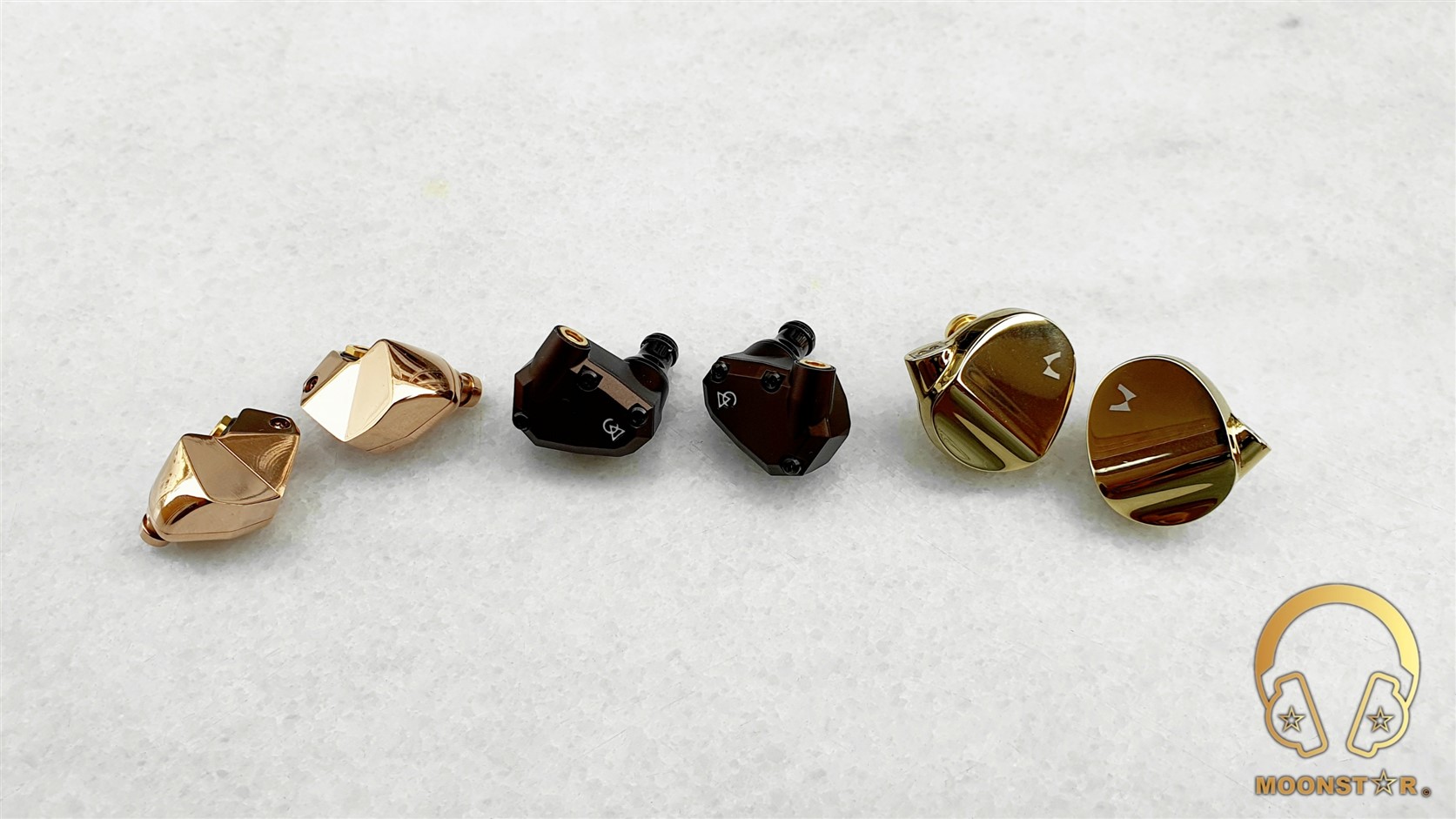
Conclusion:
The Campfire Audio Holocene is an impressive Universal IEM, when it comes to both sound and build quality. It offers a pretty linear bass response with good level of resolution, layering and detail retrieval. The midrange on the other hand is the area that dominates the character of the Holocene, which shows a pretty balanced, transparent and relaxed tuning, while the treble range adds the overall presentation a fresh breath and airiness. Noteworthy are also the new Glow-In-The-Dark plastic details and the environment friendly & colorful protective zipper case, which are some nice additions.
Pros and Cons:
- + Balanced Sound Character
- + General Resolution & Technical Ability
- + Epic build quality
- + Very rich accessories package that includes a new Environment friendly Zipper Case
- + Great Fit & Comfort
- – Upper midrange intensity
- – Not for those who prefer a V shaped sound signature (you can chose the Mammoth)
Thank you for the Read!











